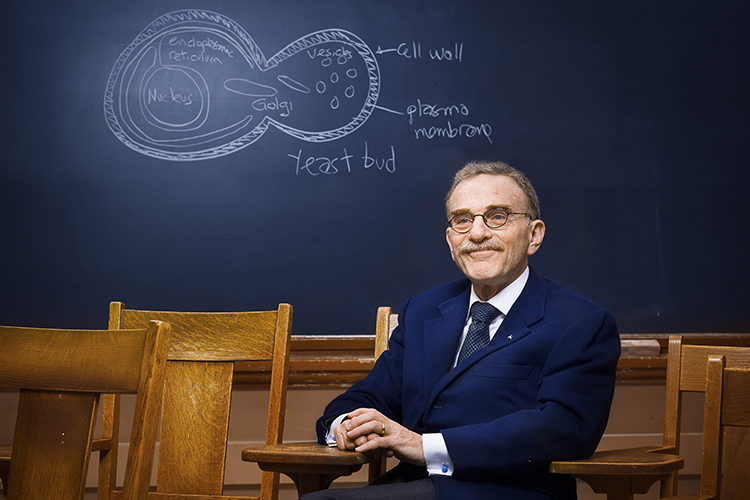Berkeley Talks: Nobel laureate Randy Schekman on new Parkinson’s research
Schekman, a professor of molecular and cell biology, spoke on Sept. 17 at the Aging, Research, and Technology Innovation Summit, which focused on the challenge of understanding and treating neurodegenerative diseases
October 4, 2019

Randy Schekman, a professor of molecular and cell biology at UC Berkeley and winner of the 2013 Nobel Prize in physiology or medicine, spoke at the Aging, Research and Technology Innovation Summit on Sept. 17. (UC Berkeley photo by Elena Zhukova)
On Sept. 17, UC Berkeley hosted the second annual Aging, Research and Technology Innovation Summit, a daylong event that brought together researchers, entrepreneurs, policymakers and health care workers to tackle some of the biggest questions in aging research. This year’s summit focused on the challenge of understanding and treating neurodegenerative diseases.
Randy Schekman, a professor of molecular and cell biology at UC Berkeley, won the 2013 Nobel Prize in physiology or medicine. He spoke at the summit about Parkinson’s disease, touching on what we already know about the disease and new research efforts that are underway.
“We have experienced a pandemic in Parkinson’s disease,” he told the audience. “The incidence … is increasing dramatically in spite of the fact that the disease was first recognized and reported by clinical symptoms 200 years ago. As the population inexorably ages, we are experiencing a wave of this disease which inexorably takes the lives of those who are afflicted.”
Schekman, whose wife died from the disease two years ago, went on to describe a new collaborative research initiative — Aligning Science Across Parkinson’s (ASAP). Led by Schekman, ASAP was created by the Milken Institute Center for Strategic Philanthropy with support from the Sergey Brin Family Foundation to better understand the underlying causes of Parkinson’s disease.
“We want to know where the disease begins, what the molecules and cells and neural circuits that are affected primarily by the disease, and then how it progresses,” he said. “Much of the research that gone on in the clinic has been valuable and important, but there are no cures. … Many of us feel that what we really need to do is get into the laboratory to understand these basic processes.”
ASAP’s first journal article, “Point of View: Coordinating a new approach to basic research into Parkinson’s disease,” was published on Sept. 25 in the open-access journal, eLife.